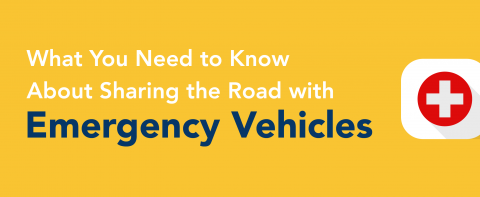
At any given moment we may share the road with a wide variety of things; Cars, 18 wheelers, tow trucks, animals, cyclist, emergency vehicles and more. How we drive must change based on this. Adjusting our driving to who we share the road with is just as important as adjusting our driving to adverse weather conditions. It is equally as important to know how to handle the common situation of sharing the road with an emergency vehicle. Do you know what to do when an emergency vehicle approaches? Let’s delve a little deeper into answering that question later.
First things first.
What is Considered an Emergency Vehicle?
- Police
- Fire
- Ambulance
- Military
So, What Should You Do?
I bet you’re thinking, “Run the red.” Not quite. When being approached by an emergency vehicle using audible and visual signals (lights and/or sirens), law requires motorists to immediately pull to the right side of the road and allow the emergency vehicle to pass. In some cases, a complete stop may be necessary to allow the emergency vehicle to pass. If already stopped at an intersection, remain stopped until the emergency vehicle passes. Emergency vehicles always have the right of way. Never follow an emergency vehicle or worse yet, try to pass one. Doing so could result in harm to yourself, others, and fines. On the other hand, if an emergency vehicle does not have its lights and sirens on, you do not treat it any differently than you would any other vehicle.
Quick Tips to Ensure Your Safety
- Listen and stay alert: Remain focused on the road at all times by not engaging in distracted driving. Use your mirrors to view oncoming vehicles.
- Proceed with caution: Pull to the right side of the road and do so swiftly, but cautiously.
- Resume entry slowly: Use your turn signal! Slowly merge back onto the road or highway while checking your surroundings for others.
Encountering Stationary Emergency Vehicles
In addition, there will be times when you encounter emergency vehicles parked on the side of the road, in an intersection, or otherwise obstructing traffic to varying degrees. Scott’s Law states how a driver should handle this situation. When approaching a stationary emergency vehicle using visual signals, yield, change to a lane away from the emergency vehicle, and proceed with caution. If a lane change is not possible, reduce speed and proceed with caution.
Scott’s Law was passed in honor of Scott Gillen of the Chicago Fire Department, who was struck and killed by a drunk driver while assisting at a crash on the Dan Ryan Expressway. A person in violation of Scott’s Law could be fined up to $10,000. The penalty is much worse if the person who committed the offense was under the influence of alcohol, drugs or intoxicating compounds at the time of the violation. If under the influence at the time of the violation, the driver would face suspension of drivers license from 90 days up to 2 years based on the severity of the situation or damage incurred.
The Takeaway
Stay vigilant, prepared, and always remember to pull to the right when emergency vehicles approach. As a motorist, it is our responsibility to operate vehicles safely and in a sensible manner. Consider taking an online refresher driving course to stay current with law changes and best driving practices.
Interested in learning more? Click here to check out our full list of Top Driver safe driving tips.
